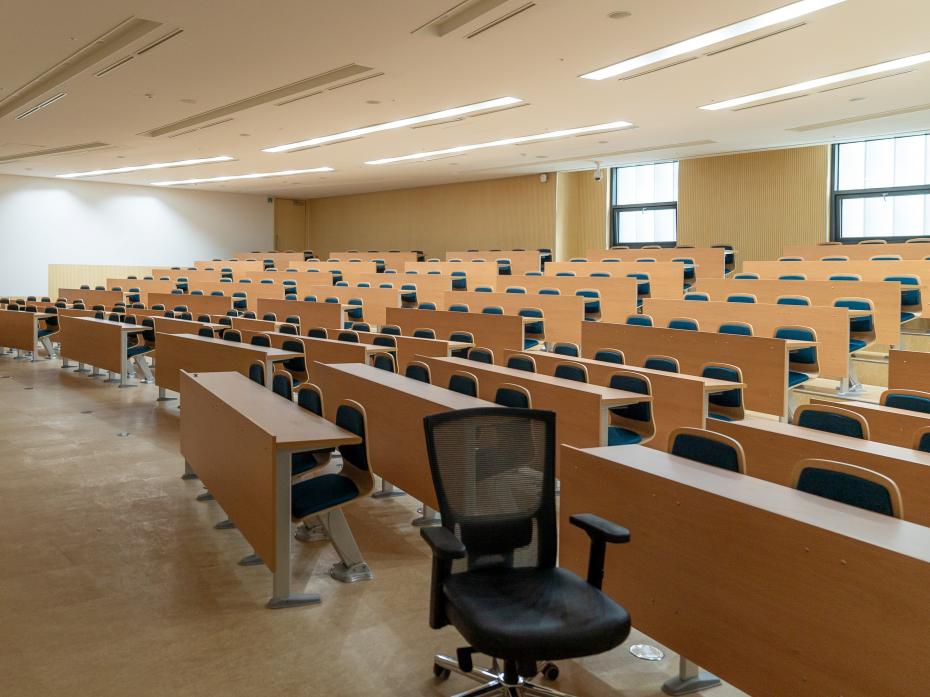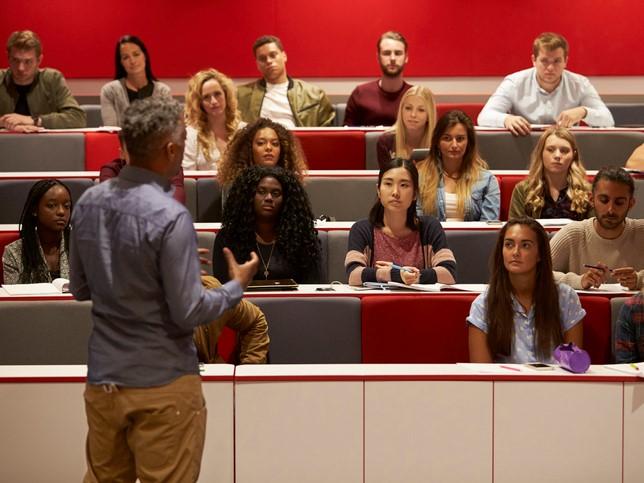Of the students who attend your taught classes, how many of them do you think are bored academically? 5 per cent? 12 per cent? Research by the publisher Wiley found that 55 per cent of undergraduates admitted they were “struggling to stay engaged and interested in their classes”. For graduate students, the figure was 38 per cent. I was stunned the first time I came across these statistics: are nearly two-fifths of the students I teach really bored in my master’s classes?
Despite there being a multitude of reasons for student boredom, the one that is frequently recognised relates to traditional lectures: the chalk-and-talk component of a unit or programme in which the one-way transmission of course content from lecturer to student occurs. Even though they have been used for hundreds of years, there are numerous criticisms of traditional lectures, in part due to the passive method of learning that they characteristically promote. Joe Cuseo in his paper The Empirical Case Against Large Class Size: Adverse Effects on the Teaching, Learning and Retention of First-Year Students, lists a number of problematic outcomes associated with the lecturing mode of instruction, several of which are of personal concern:
- Less active student involvement in the learning process
- Reduced depth of student thinking inside the classroom
- Lower levels of academic achievement (learning) and academic performance (grades).
In more recent years, recommendations from international academic literature, research findings, professional bodies and students themselves have collectively advocated for a shift in instructional focus to include them in the learning process by embracing what is commonly referred to as “active learning”.
Active learning: the what
Advocated by prominent scholars such as John Dewey, David A. Kolb and Jerome Bruner, active learning is based on a theory of learning called constructivism, which emphasises learners constructing or building their understanding. With aspects of the nature of active learning being identified in the thinking of Jean Piaget and Lev Vygotsky, there is strong theoretical evidence to suggest that learning always involves action, be it physical or mental. Definitions-wise, it might come as a surprise that there is no generally accepted definition of the term, with examples varying in conceptual clarity across different fields. In the context of education, definitions range from simply describing active learning as “learning by doing” to any instructional method that engages students in the learning process.
As an academic who is rooted in professional practice, I personally subscribe to the idea of active learning referring to the practical endeavours of lecturers that promote student engagement in the learning context; indeed, it is argued that learning at any level is a constructive process that requires active participation by both the teacher (lecturer) and the student. This can be achieved, in part, by activating traditional lectures with engaging activities and multiple rest periods, these purposefully helping to improve learning attitudes and assure higher levels of student attention/retention.
- Resource collection: Enhance student engagement
- Teach and talk: encouraging student dialogue in class
- The rise and rise of the lecture-tainer
Activation: the how
There are copious ways in which lecturers can activate traditional lectures. Andrea Revell and Emma Wainwright in What Makes Lectures ‘Unmissable’? Insights into Teaching Excellence and Active Learning suggest that activating traditional lectures “involves discussion, problem solving, presentations, group work such as buzz groups, brainstorming (thought showering), role plays, debates – anything that gets students interacting with each other and engaging with the lecture material”. I argue that lecturers need not only to be aware of what is available activating-wise, but also to be selective of the strategies that they use, adapting these in response to the students they teach and incorporating them across the full lecture structure.
Before the start of the lecture
Three guesses: display an image/picture/object/word/quotation associated with the focus of the lecture as students enter and settle into the lecture space. Can they guess its significance? Ensure that you refer back to this during the course of the lecture, explaining its importance.
Introduction to the lecture
Commence with a contest: engage students with a short quiz/exercise/value line/game to survey their initial assumptions and attitudes. Get students to revisit their responses at the end of the lecture to ascertain if/how the lecture has altered their thinking and understanding.
Main body of the lecture
Cast a vote: canvass student opinions on aspects of the lecture focus through a show of hands/fingers, large coloured/lettered voting cards, the stamping of their feet or a collective clap of students’ hands.
Conclusion of the lecture
Written review: get students to individually write either a three-minute micro-essay that summarises the key points of the lecture, a list of keywords (between three and five) that encapsulate the subject matter that has been covered or a review haiku.
It is important to stress that the practical endeavours of lecturers, activating-wise (as per the above), should not be designed with the intent of just entertaining students. Doug Johnson asserts that “Entertainment’s primary purpose is to create an enjoyable experience; engagement’s primary purpose is to focus attention so learning occurs.” While I am not adverse to students having an enjoyable experience traditional lecture-wise (think smiles and laughter), the emphasis should always be on student learning, with the added intent of relieving student boredom and disengagement with their university studies at all levels.
This opinion piece draws on ideas that are developed in “Large Lectures: Active Adult Instruction and ‘Creative Touches’”, which serves as the opening chapter of the forthcoming Creative Practice in Higher Education: Engaging Adult Learners through Theory and Pedagogy.
Simon Brownhill is a senior lecturer at the School of Education at the University of Bristol, UK.
If you would like advice and insight from academics and university staff delivered directly to your inbox each week, sign up for the Campus newsletter.




comment